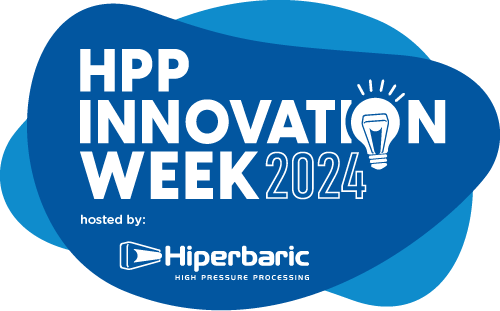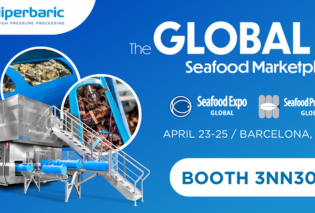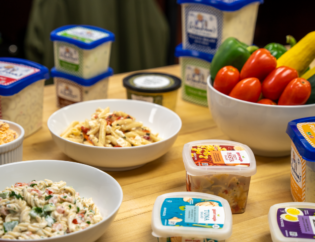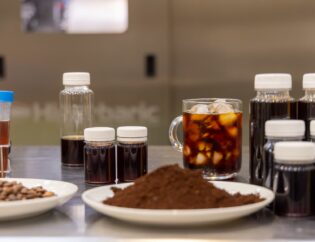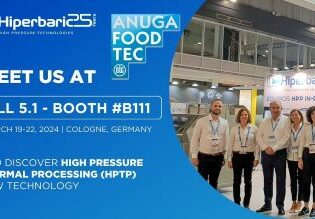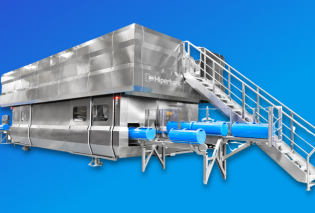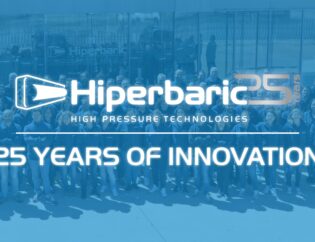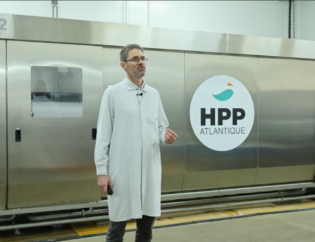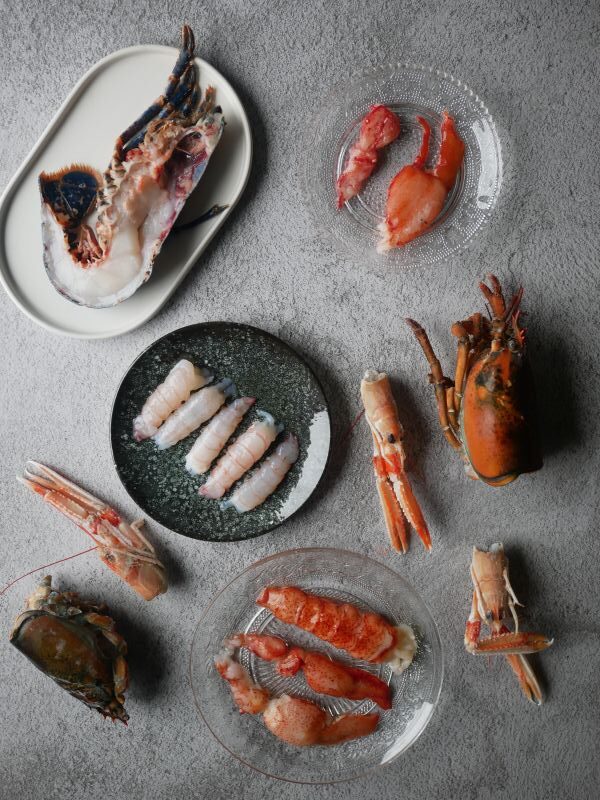
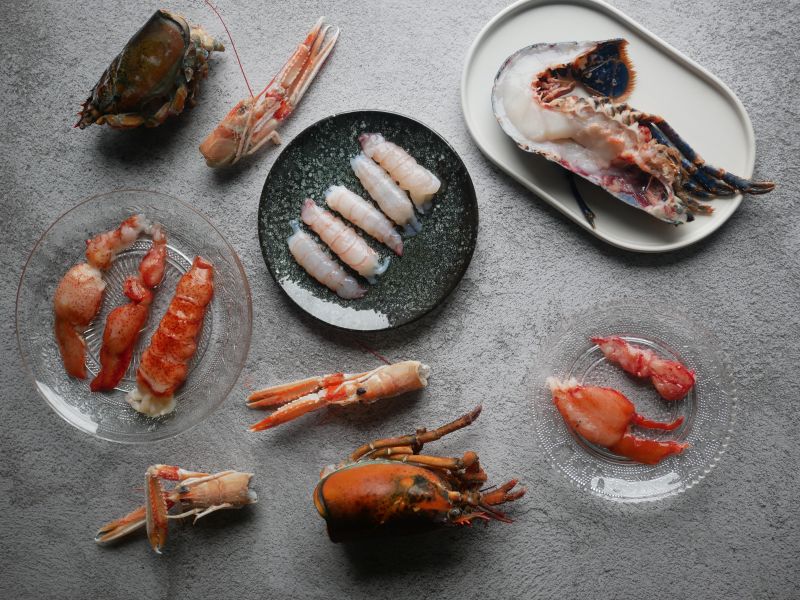
The High Pressure Processing (HPP) technology is revolutionizing seafood processing, offering food safety, freshness, new market opportunities, but most importantly, 100% raw meat extraction. HPP is able to shuck mollusk and permits extraction of crustacean meat without the use of heat, achieving significant yield increases from 20-50% more and greatly reducing hand labor.
HPP Shucking for Lobsters
Using high pressure, HPP weakens the muscles attaching the shelf and meat of lobsters and allows the 100% recovery of edible lobster meat with minimal effort.
Greenhead Lobster implemented this technology that allows them to separate 100% of meat from the shell to improve productivity and enhance labor usage. HPP also enhances food safety by destroying food-borne pathogens, while also offering a tastier and premium-quality product, with an extended shelf-life of lobster meat from 10 to 18 days.
Processing 30,000 pounds of lobster per day, Greenhead Lobster distributes its products in both fresh and frozen formats to restaurants, retail channels, and directly to consumers via its website.
In the last year, they have seen an increase in their raw, frozen tail business, indicating that people are interested in cooking seafood at home rather than going to the restaurant. People are really not afraid to dive in and prepare a lobster dinner using HPP frozen, raw lobster tails, since the technology allows consumers to remove the meat from the lobster tail with ease.
The Greenhead Lobster slogan is, “It’s not how much lobster you buy, it’s how much you get to eat”. What they mean by that is when you have HPP, all the meat comes out. Hugh Reynolds, Greenhead Lobster Owner, states “When you don’t have HPP, you’re going back in there trying to get what’s stuck to the shell”, and shares an insight of their operation and benefits of the HPP technology in the next video.
The HPP seafood meat extraction process involves pressure levels around 3,000 – 4,200 bar (44.1 – 60.3 kpsi) and holding times between 45 – 90 s. Shucking with seawater (4 – 25 °C) improves flavor as high pressure infuses salt into the lobster meat. HPP shucking should occur with live lobsters or a short time after death. Otherwise, the lack of respiration stiffens the muscle and complicates HPP shucking.
For example, French processor Cinq Degrés Ouest stores lobsters in seawater tanks to keep them alive before HPP. The production line of Cinq-DeGrés continues with the manual shell removal and meat collection after HPP, followed by cryogenic freezing and packaging. Cinq-De-Grés keeps temperature between 4 – 8 °C at all stages, guaranteeing the best lobster quality.
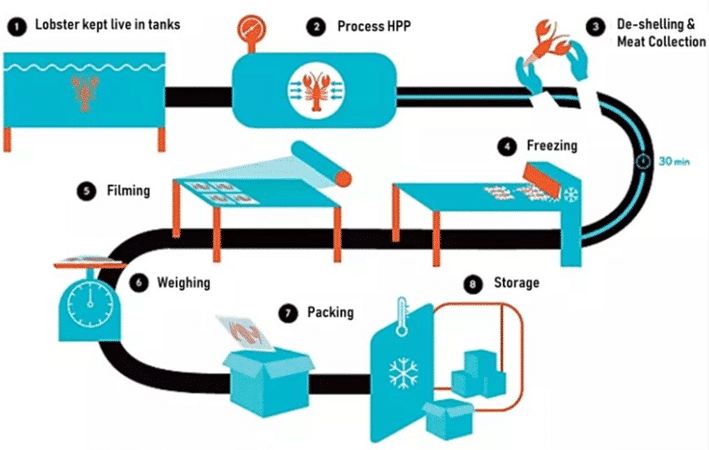
Fig. 1. Processing line for lobster meat extraction. Translated from Cinq-De-Grés: Nos Philosphe.
The versatility of HPP allows processors to commercialize lobster in multiple presentations (Fig. 2). Intact HPP lobster claws and tails, or split tails, are the highest valued product as it has an elegant display for sophisticated dishes, whereas legs, knuckles, and broken claws serve as minced meat for soups, wet salads or fillings. Alternatively, the shell remains in place after HPP, but loose enough to allow users an easy removal at the time of consumption.
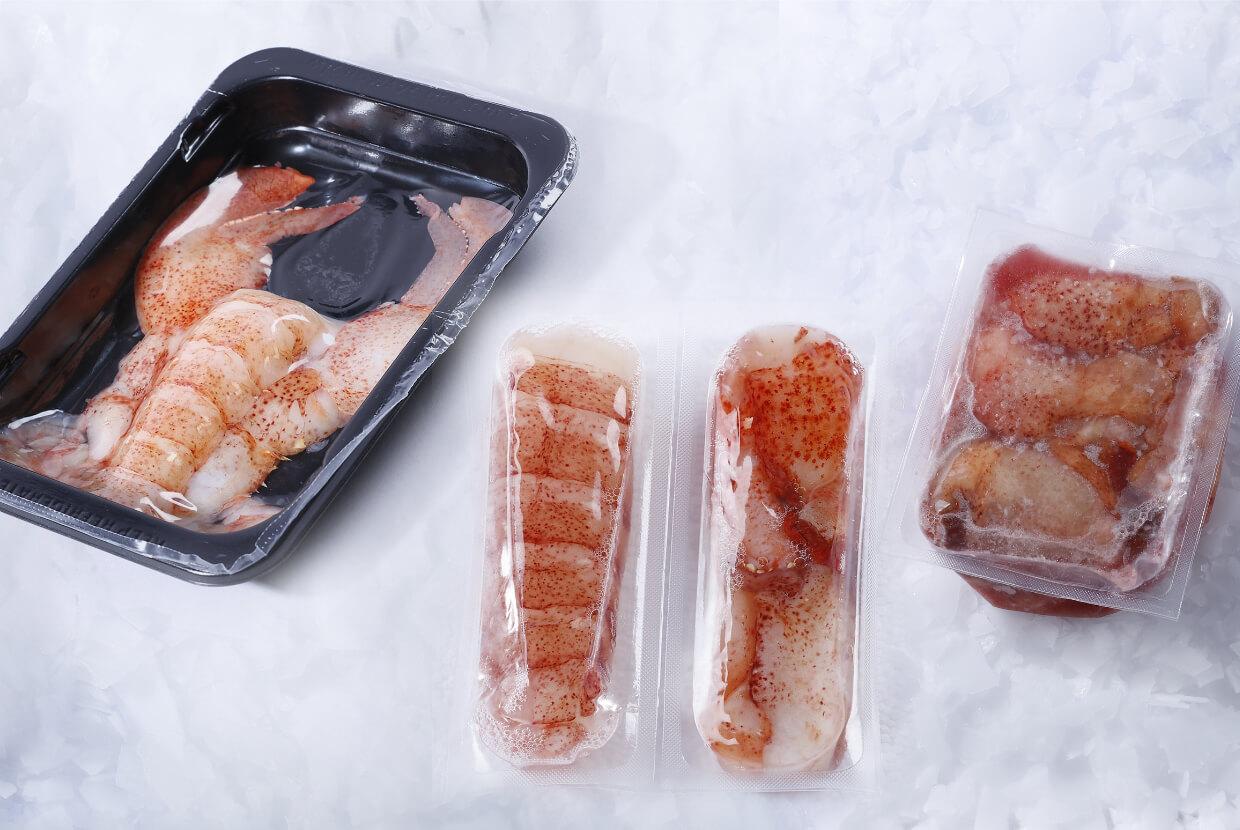
FIg. 2. Commerical presentations of HPP raw lobster
Hamid et al. (2020) reported that raw lobster tails barely achieve 3-10 days of refrigerated shelf life. In their study, a sensory panel rejected 90% of samples after 7 days of storage at 2 °C due to off-odor formation. Conversely, 70% of the panelists reported lobster tails processed at 3500 bar (~51.45 kpsi) with 10 min holding time remained acceptable after 21-28 days of storage. HPP also kept total volatile base nitrogen (TVBN), compounds associated with off-odors and off-flavors, below the detection limit (35-40 mg N/100 g meat) through 28 days.
For cooked lobster, processors may apply HPP to facilitate extraction of pre-cooked meat, and repack in tubs or pouches (Fig. 3). Alternatively, operators remove meat of cooked lobsters and repackage in pouches, tubs or trays, before applying HPP as a post-lethal intervention that extends shelf life and minimizes risk associated with Listeria monocytogenes recontamination.

Fig. 3. HPP cooked lobster.
In another study, Hamid et al. (2019) compared the sensory properties of sous-vide (SV; 65 °C, 10 min) lobster tails, with tails shucked with HPP (3500 bar, 10 min) and subsequently cooked with SV. The authors reported that sensory panelists did not find a difference between SV and SV+HPP lobster tails. In another document related to the study (Humaid 2020), a sub dataset of panelists who consumer lobster in a regular basis (every 2-3 months) reported HPP+SV lobster tails as “tender” and “juicy” more frequently when compared to SV samples. This may also explain why panelists scored SV+HPP slightly higher when asked if lobster tails met their expectations (Fig. 4).
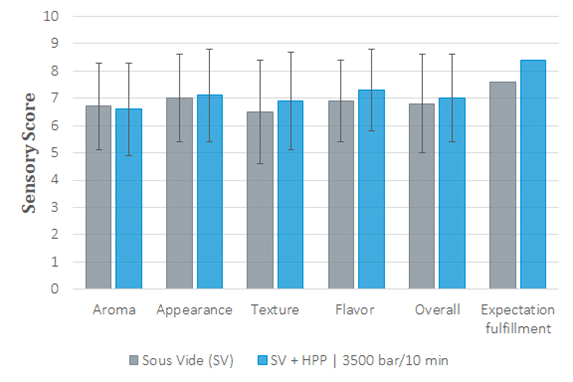
Fig 4. Sensory evaluation of Sous Vide (SV), and SV+HPP lobster tails. Data from Humaid et al. (2020)
HPP Shucking for Molluscs
Oyster, scallops, mussels, clams and other mollusc products are highly regarded HPP seafood applications. As in the case of lobster, HPP shucking detaches the adductor muscle to open the shell of bivalves as shown in the video below. Furthermore, HPP keeps the flavor of unprocessed molluscs, while improving juiciness and flavor of the meat.
Meat removal following HPP shucking is so easy that processors wrap a rubber band around the shell in order to keep the meat from falling with handling.
Overall, denaturation of the adductor muscle becomes evident around 2500 bar (~36.8 kpsi). Scientific literature suggests HPP shucking achieves over 80% of partial/full adductor muscle release of oysters and scallops around 2500-3000 bar (~36.8-44.1 kpsi) within 1-3 min holding time (Table 1). Furthermore, these same HPP conditions notably reduce the risk associated with spp., as covered with more detail in our Vibriosis blog entry.

Table 1. Bivalve adduction muscle release yields after HPP shucking.
Processing at higher pressure levels and extending holding time increases the probability of achieving 100% full release. However, it is more likely that high pressure levels break the bivalve shell and contaminate the meat with the debris (Rong et al., 2018). Several factors such as age and specie influence the adductor release rate as observed in Table 1. Thus, optimization of processing conditions for meat recovery is recommended.
Crab Meat Extraction
Crabs exhibit harder shell and tougher meat, which makes it trickier for HPP shucking. Still, HPP shucking of crabs is feasible for certain species with wide notoriety among seafood processors. Freshpack received the ‘Best Foodservice Product award’ for the commercialization of HPP king crab legs (Seafood Expo, 2016). The company applies HPP for meat extraction, followed by vacuum packaging and freezing without losing sacrificing taste or overall quality.
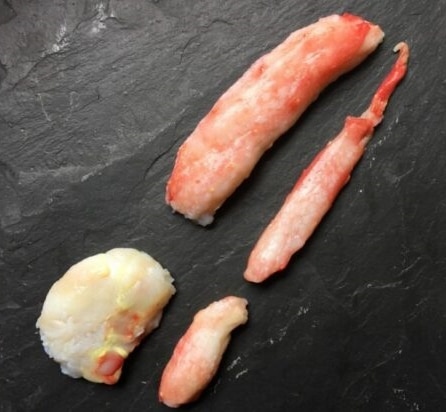
Researchers at the Canadian Centre for Fisheries Innovation (CCFI) optimized conditions to HPP shuck snow crab, with processing conditions ranging around 2500-2750 bar and 50-60 s holding time (Verge, 2019). CCFI research studies also discovered that HPP onsets an enzymatic reaction (polyphenol oxidase; PPO), inducing an undesired blue color in lively crabs. Thus, investigators recommend to weaken or kill crabs before the HPP intervention to minimize blue color appearance. Additionally, the CCFI developed a patent pending crab butchering machine, positioned to become disruptive in the crab industry (Verge, 2019).
If you’d like to learn more about HPP for seafood meat extraction, contact us!

